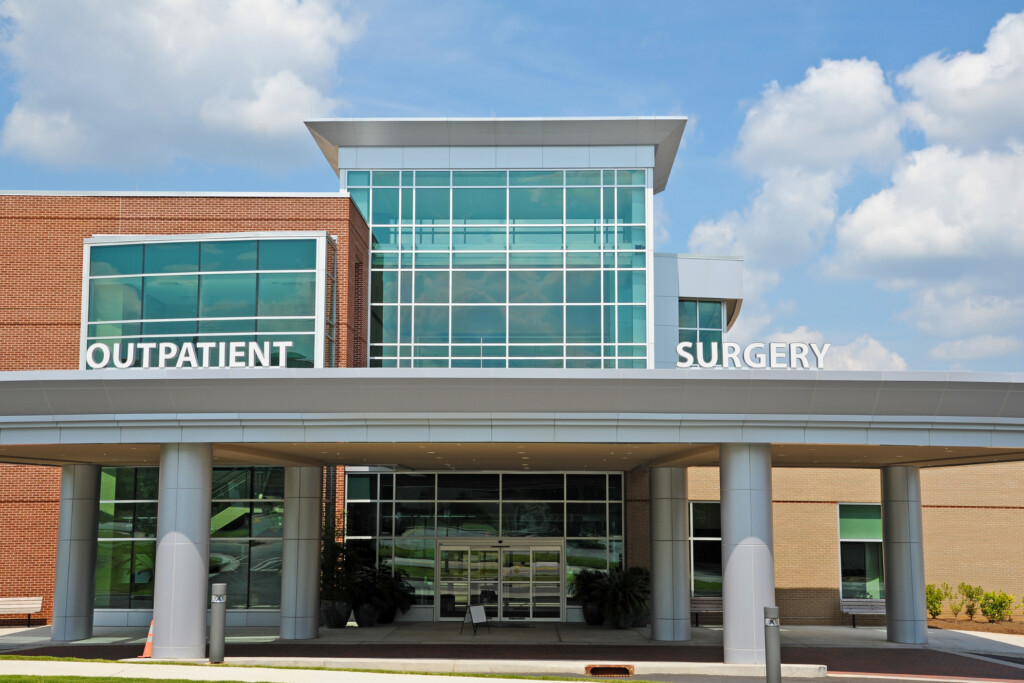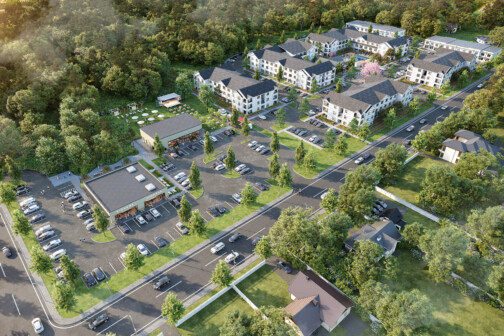Healthcare providers are stuck between the rock of increasing demand and the hard place of high construction costs, pushing tenants into locations that may not have been on their radar before inflation increased prices and high interest rates limited borrowing capacity.
There is good and bad news for those in the outpatient business. The good news is that an aging population, customer preference, and reimbursement trends are pushing more business away from hospitals and toward outpatient settings. With Baby Boomers continuing to age, they will require more care, much of which can be delivered in an outpatient setting. In 2021, those older than 65 represented 18 percent of the population but consumed 36 percent of the healthcare, according to a recent report from JLL. Between 2021 and 2031, outpatient volume for those 80 and above is expected to increase by 65.3 percent.
While inpatient volumes are predicted to decline 0.7 percent in the next five years, models say outpatient volumes should grow 10 percent over that period. Between 2022 and 2027, medical offices and clinics are expected to see an increase of 126 million visits. Patient demand for care closer to home is also growing outpatient demand, as are trends like active retirements, which lead to more orthopedic care. Between 2022 and 2023, hip, shoulder, and knee replacement claims grew 19.8 percent. Concierge care and increased awareness and demand for mental health are also wind in the sales of outpatient providers.
But despite the increasing demand, high interest rates and constructions costs have been a hurdle to new development in the outpatient space, forcing providers to find nontraditional real estate to continue to practice.
“You’ve got a disparity between landowners or land sellers who would provide a location for new facilities and the time that it takes to get a job put together, so it’s the perfect storm of factors that are making new development challenging right now,” says Ethan Garner, the managing director and region lead for healthcare and life sciences for JLL. “We’re seeing providers going out into emerging markets and growing suburban communities that are being forced into nontraditional spaces like retail and professional parks because that’s the space is. They don’t have time to wait on a new development.”
Compared to other industries where increased construction costs and high interest rates can theoretically be remedied by raising prices to fund new construction, healthcare is hamstrung by reimbursement schedules, which are renegotiated yearly, and where payers like insurance companies hold a lot of power to resist rate increases. A restaurant or retail store can charge more for offering services in a more expensive location, but most healthcare providers cannot do the same.
While medical outpatient providers will be looking to the office and retail space due to increased costs, Garner says the industry is unlikely to make much of a dent in the decrease in office demand. Clinical settings often have building requirements that the average office space can’t meet. Additionally, the medical outpatient market is too niche to impact significant vacancies. According to a report from Globest, net absorption was negative 1.3 million square feet in 2023, about 2 million less than in 2022, when there was a positive absorption of 900,000 square feet in 2022.
“Healthcare is such a small portion of the overall market that we don’t see a ton of instances in which you’ve got healthcare consuming a huge volume of space,” Garner says. “The problem is that in many areas where you’ve got office vacancies, you’ve already got healthy healthcare supply.”
The good news is that Dallas-Fort Worth and other Sun Belt regions are in a relatively good position in terms of new outpatient facilities and increasing demand. According to the JLL report, outpatient volume was more than 60 million in DFW in 2022 and is expected to grow 16.8 percent by 2027, meaning more outpatient volume will come to Dallas than any other city. The question remains whether new development will match population and outpatient demand growth or if the squeeze will continue.
Fortunately for locals, the pressure from prices and costs is less robust in North Texas, where land and labor are cheaper than in other areas, so the challenges are less acute here in DFW. With a metropolitan statistical area on a trajectory to surpass Chicago in the coming years, there are opportunities to create an outpatient practice and plenty of patients to keep providers busy. Stabilized interest rates and robust job growth could spell an improving capital market and give investors solid ground from which to plan.
Despite the headwinds in the face of the outpatient real estate market, a provider couldn’t be in a much better place than DFW, Garner says. “The sunbelt states are experiencing robust growth in the space and similar trends as DFW, but on a smaller scale. My peers and I share that optimism.”
Author






